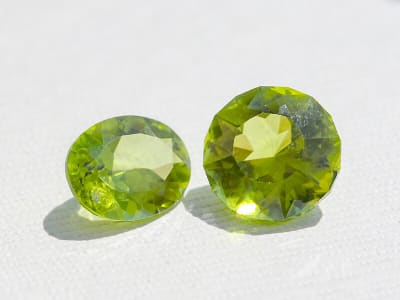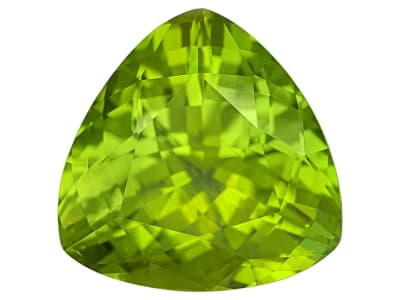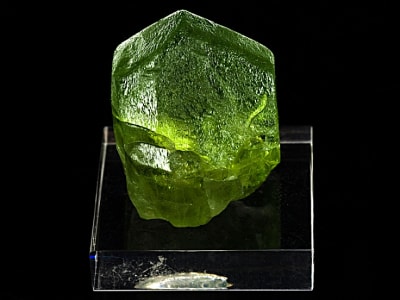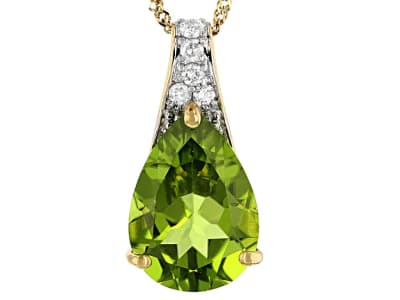Peridot is a variety of forsterite in the olivine group. It is the August birthstone. Peridot is often described as olive green, but it can be various shades of greenish yellow to yellowish green. Historical records state that Peridot was mined by the ancient Egyptians in the 3rd century, on the island of Topazios, in the Red Sea. This island is now known as Zagbargad or St. John’s Island today. Faceted peridot larger than 100 carats has been cut but is rare. Peridot comes from many locations on the planet earth but pallasitic peridot comes from outer space.
General Information
Tolerance:(+0.020/-0.020)
LWUV: Inert
Peridot Colors
-
 Green
Green -
 Green
Green -
 Yellow
Yellow
Alternate Names
Chrysolite, Hawaiite
Countries of Origin
Tanzania, United Republic Of; Myanmar; Afghanistan; Russian Federation; Viet Nam; United States of America; Egypt; Madagascar; Thailand; Mongolia; Mozambique; Pakistan; Korea (the Republic of); Unknown; Mali; China; Brazil; Chile; Nepal; Colombia; Sri Lanka; Kenya; India; Norway; Namibia; Mexico; Ethiopia; Indonesia
History
The August birthstone, peridot is sometimes called the "Evening Emerald". We believe that is misleading and does a disservice to this verdant stone. Although it's been mistaken for emerald, peridot is not an emerald (beryl); it's an olivine. Peridot's natural color - a luminous green with a touch of brilliant yellow - makes it very desirable. To add to its appeal, it's found in a wide variety of shades from the intense to the pastel. Peridot gets its color from iron. Peridot is found in lava, deep in the earth's mantle and occasionally, in meteorites that have fallen to earth. This affordable stone has a distinguished history. Peridots were among Cleopatra's treasures, although at that time they were mistaken for emeralds.
Care
Avoid sudden temperature changes, harsh chemicals, and ultrasonic cleaners.

More About Peridot
The ancient Greeks believed peridot bestowed regal grace upon its wearer. Certainly, many a king and queen have worn this remarkable green stone in crown jewels. The ancient Egyptians called it the "gem of the sun." In Hawaiian folklore, Peridot is said to symbolize the tears of Pele, goddess of volcanoes and fire. Gaze into a beautiful peridot... it's like seeing eternal spring. When you own peridot, you have your very own piece of endless springtime.



